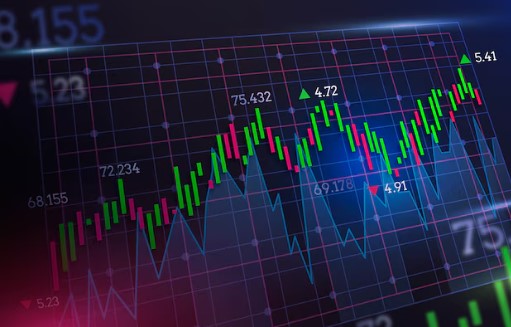Ship design is an intricate field that merges engineering, technology, and artistry. As the maritime industry faces new challenges, from environmental regulations to technological advancements, ship design must evolve to meet these demands. This article explores the latest trends, innovations, and considerations in ship design, emphasizing how they impact efficiency, sustainability, and safety in maritime operations.
The Importance of Ship Design
Ship design is crucial for various reasons, including operational efficiency, safety, and environmental impact. A well-designed vessel not only maximizes cargo capacity but also minimizes fuel consumption and emissions. This is increasingly important as the industry seeks to comply with strict environmental regulations and reduce its carbon footprint.
Furthermore, the design of a ship affects its performance in different conditions, such as rough seas or icy waters. The hull shape, materials used, and onboard technology all contribute to a ship’s seaworthiness and ability to operate safely in various environments.
See also: Create Your Own Analogy With an Object-To-Function Relationship Using Common Kitchen Appliances
Innovations in Ship Design
1. Sustainable Materials
One of the most significant trends in ship design is the use of sustainable materials. As the maritime industry becomes more conscious of its environmental impact, designers are exploring eco-friendly alternatives to traditional materials. Lightweight composites, recycled metals, and biodegradable substances are being integrated into ship construction. These materials not only reduce the weight of the vessel, improving fuel efficiency, but also lower the overall environmental impact of the ship’s lifecycle.
2. Hydrodynamic Optimization
Hydrodynamics plays a crucial role in ship design. The shape of a vessel’s hull affects its speed, stability, and fuel efficiency. Modern ship designers are leveraging advanced computational fluid dynamics (CFD) to simulate how water flows around a ship’s hull. This technology allows for precise optimization of hull shapes, leading to improved performance and reduced fuel consumption. Designers can now create vessels that glide more efficiently through the water, reducing drag and enhancing speed.
3. Autonomous Vessels
The rise of autonomous technology is revolutionizing ship design. Designers are now tasked with creating vessels that can operate independently, using sensors, AI, and advanced navigation systems. These autonomous ships can optimize their routes, adjust to environmental conditions, and even perform maintenance tasks without human intervention. This innovation not only improves operational efficiency but also enhances safety by reducing the potential for human error.
4. Hybrid Propulsion Systems
As the push for cleaner energy sources grows, hybrid propulsion systems are becoming more prevalent in ship design. These systems combine traditional fuel sources with electric power, allowing vessels to operate more efficiently and with lower emissions. Ship designers are exploring various configurations for hybrid systems, such as integrating batteries that can be recharged while the vessel is docked or using renewable energy sources like wind and solar power. This trend aligns with global efforts to reduce greenhouse gas emissions from the maritime sector.
5. Modular Design Approaches
Modular design is another innovative trend in ship design. By creating interchangeable modules for different ship components, designers can streamline the construction process and allow for greater customization. This approach not only reduces construction time but also enables ship owners to modify their vessels easily to adapt to changing operational requirements. For instance, a cargo ship can be reconfigured for passenger transport with relative ease if designed modularly.
Environmental Considerations
As the maritime industry faces increasing scrutiny over its environmental impact, ship design must prioritize sustainability. Shipbuilders are now integrating technologies that minimize emissions and enhance energy efficiency. This includes installing exhaust gas cleaning systems, utilizing alternative fuels, and implementing waste management solutions onboard. Designers are also focusing on improving ballast water management systems to prevent the spread of invasive species and protect marine ecosystems.
Additionally, regulatory frameworks such as the International Maritime Organization’s (IMO) goals for reducing greenhouse gas emissions are driving innovation in ship design. Vessels are being designed to comply with stricter emission standards, ensuring they meet or exceed international guidelines for sustainability.
Safety and Ergonomics in Ship Design
Safety is paramount in ship design. Designers must consider various factors, including stability, structural integrity, and emergency response systems. Innovations in safety technology, such as advanced fire detection systems, automated lifeboats, and enhanced navigational aids, are becoming standard in modern vessel design.
Moreover, the ergonomic design of onboard spaces is gaining attention. Designers are now prioritizing the comfort and safety of crew members by creating more intuitive layouts, improving visibility from the bridge, and providing better living accommodations. This focus on ergonomics not only enhances crew well-being but also contributes to overall operational efficiency.
The Future of Ship Design
The future of ship design is poised for exciting advancements. With the integration of emerging technologies such as artificial intelligence, machine learning, and the Internet of Things (IoT), vessels will become smarter and more efficient. Predictive maintenance systems will enable ship operators to anticipate equipment failures before they occur, reducing downtime and maintenance costs.
Moreover, the shift toward digital twin technology—creating a virtual model of a ship—will allow designers and operators to simulate various scenarios and optimize performance in real-time. This data-driven approach will enhance decision-making and improve overall vessel management.
Conclusion
Ship design is at the forefront of innovation in the maritime industry. As designers face new challenges and opportunities, the focus on sustainability, efficiency, and safety continues to shape the future of vessel construction. By embracing cutting-edge technologies and sustainable practices, the industry can navigate toward a more efficient and environmentally friendly future. The evolution of ship design not only impacts the vessels themselves but also the broader maritime ecosystem, paving the way for a new era of maritime engineering







